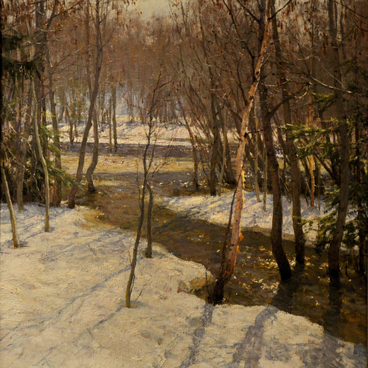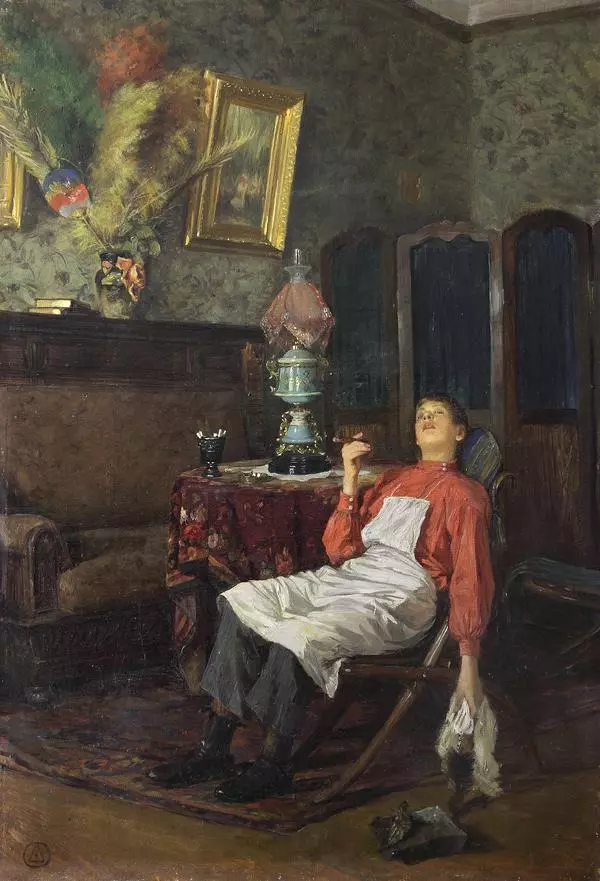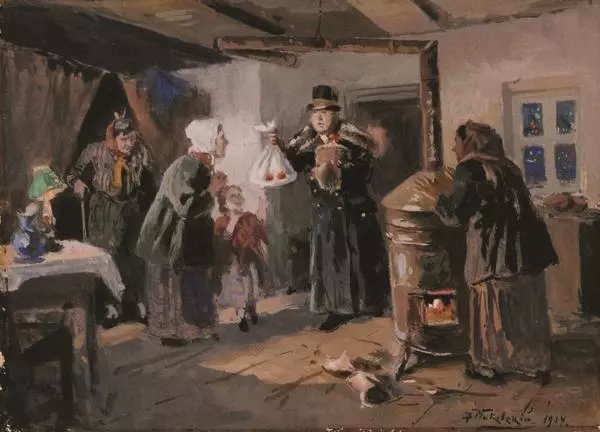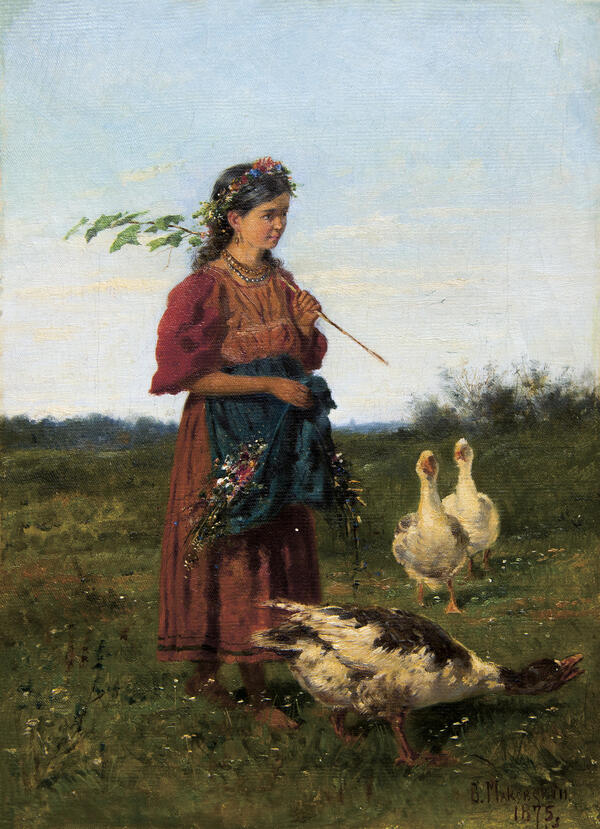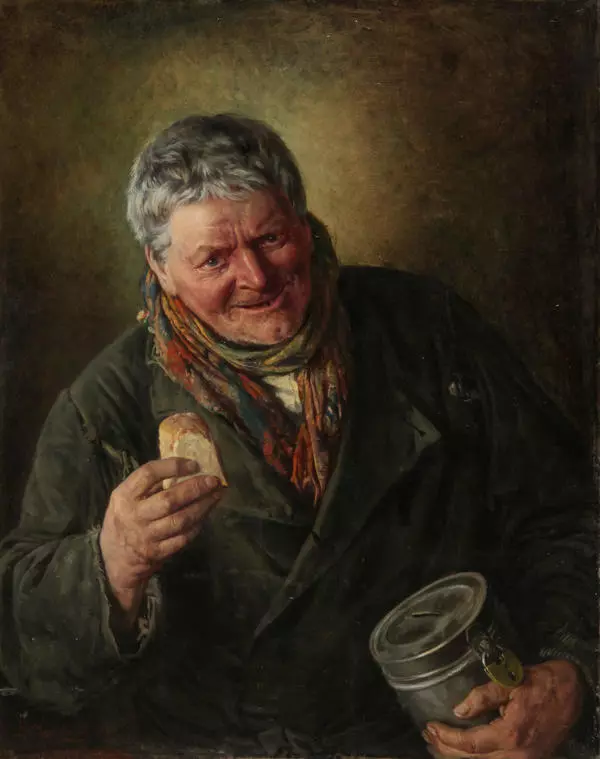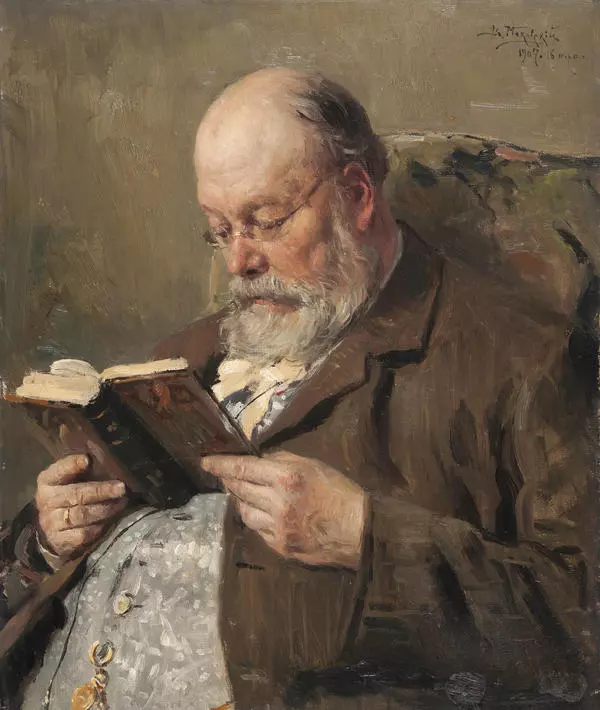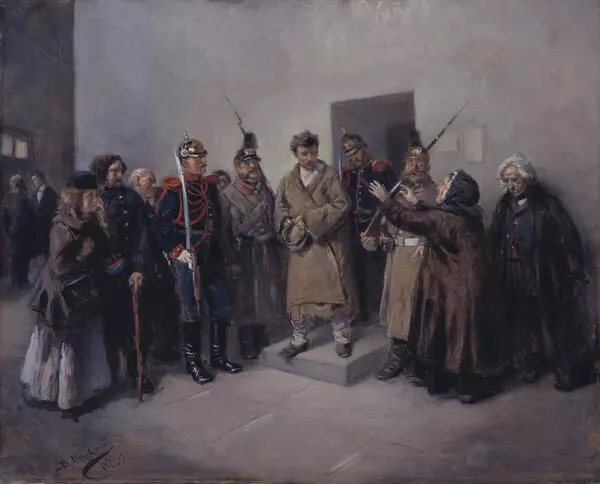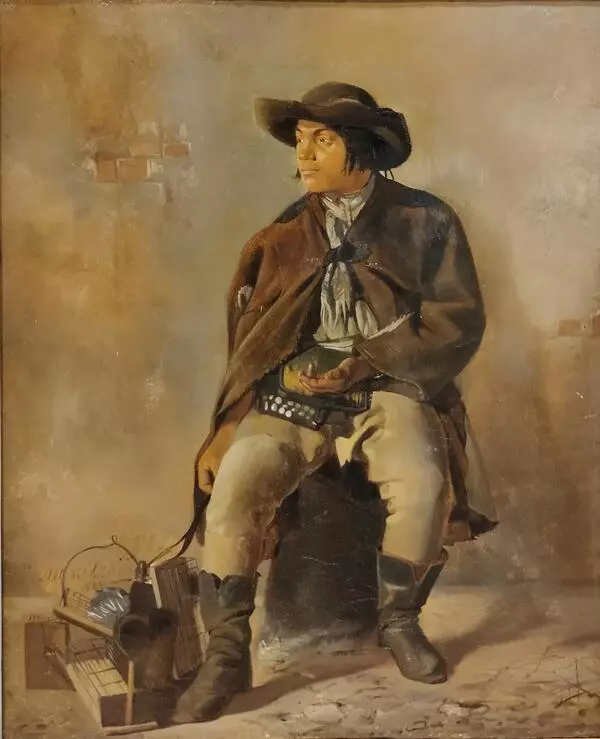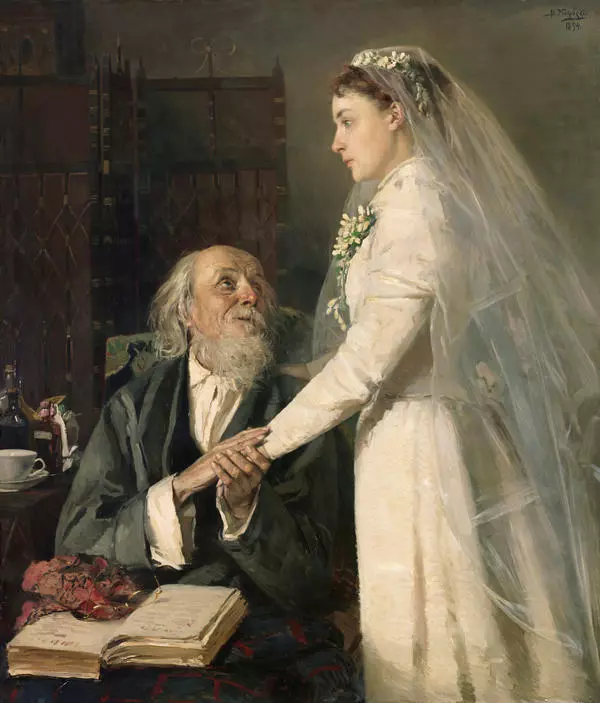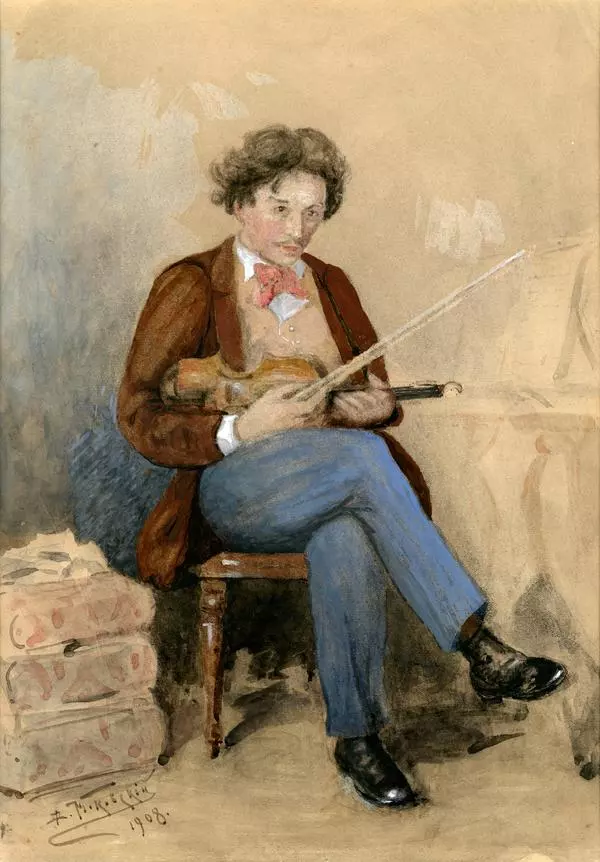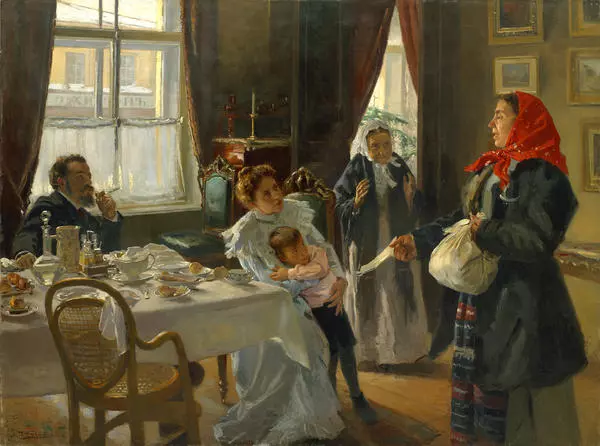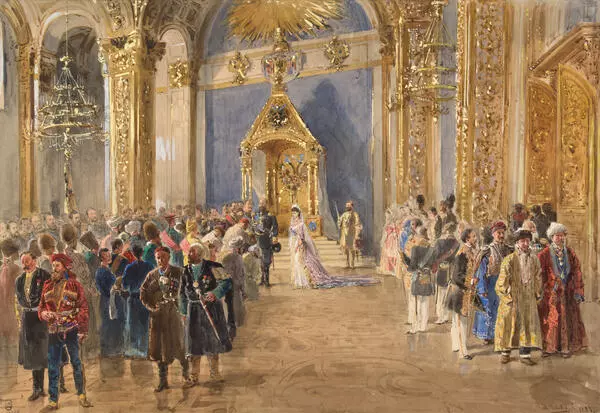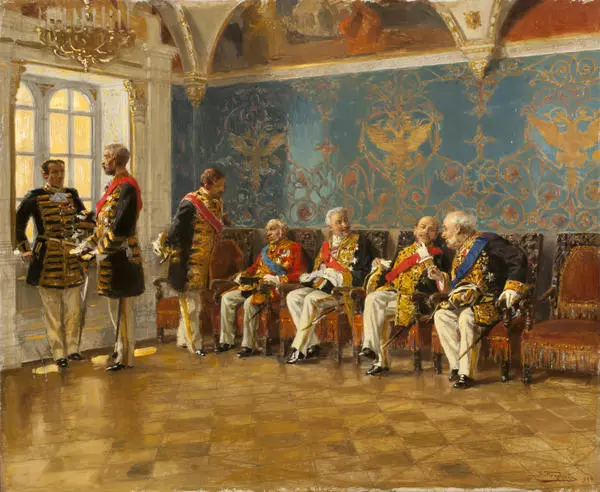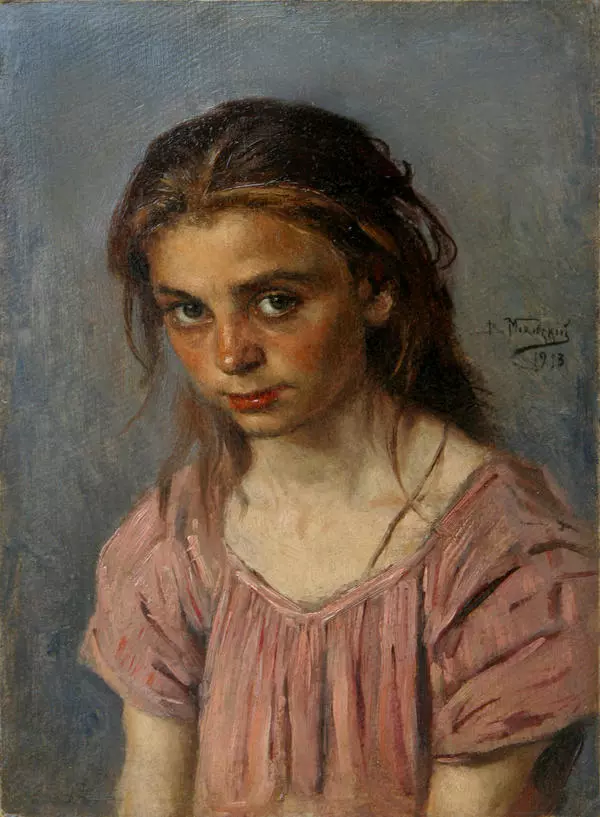Vladimir Yegorovich Makovsky (1846–1920) was born in Moscow in the family of one of the founders of the “Life Class” — the future Moscow School of Painting, Sculpture and Architecture. His older brothers Konstantin and Nikolai and sister Alexandra also became famous artists.
In 1861, Makovsky entered the School of Painting and Sculpture in St. Petersburg. There, his teachers were Sergey Konstantinovich Zaryanko and Yevgraf Semyonovich Sorokin. Makovsky graduated from the Moscow School of Painting, Sculpture and Architecture in 1866. This name was received by the educational institution a year before.
Vladimir Yegorovich Makovsky joined the Society of Traveling Art Exhibitions in 1872. He remained faithful to the principles of realism to the end of his days, tirelessly opposed the art movements and trends that distorted reality.
The artist’s creative range became wider every year. In the second half of the 1870s, he created a number of works, the so-called pictorial short stories: “Making Jam, ” “Fans of Nightingales, ” “Friends.” These were idyllic scenes about the most mundane and ordinary phenomena of everyday life.
In the 1880s, his work reached its maturity, he expanded the scope of observations, began to penetrate deeper into the meaning of the surrounding life, and managed to achieve great generalization power in creating typical scenes and images. At the same time, began the fruitful pedagogical activity of the artist: first at the Moscow School of Painting, Sculpture and Architecture, and then at the St. Petersburg Academy of Arts. In the latter, Vladimir Yegorovich was awarded the title of professor in 1892. Vladimir Makovsky’s passion for art was appealing for young people.
The artist dedicated the picturesque painting “Waiting for the Teacher” to the problem of education in rural areas. With a feeling of sincere compassion for the difficult fate of the young children, using large brush strokes and restrained colors, Makovsky deepened the content of the work.
Thanks to Makovsky’s
attentive attitude to life, his best canvases became genuine artistic documents
of that time. Art critic Vladimir Vasilyevich Stasov wrote,

